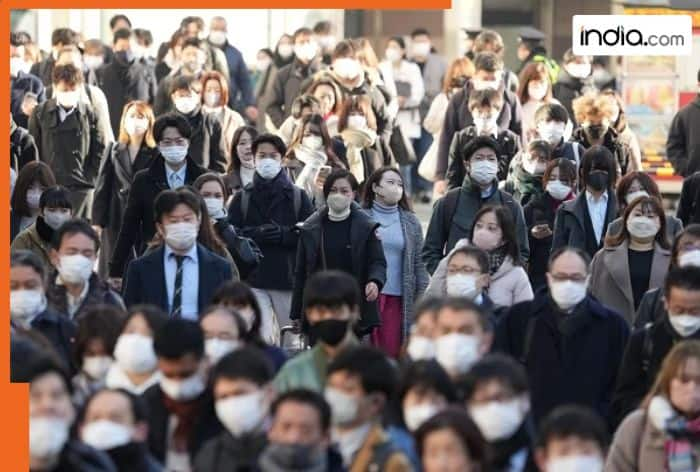According to Japan’s Ministry of Health, the number of patients exceeds the epidemic threshold, with an average of 1.04 patients per medical institution.

The world has not yet moved on from the deadly COVID-19 pandemic that caused global shutdowns, left lives in disarray, and millions dead across the planet. Now, as countries continue to recover from the COVID-19 pandemic, Japan is facing another health crisis: a sudden outbreak of seasonal influenza. Reports suggest that over 4,000 people have already been infected, and the numbers will likely continue to climb as the temperature decreases daily.
What disease has struck Japan so severely this year?
Japan’s Ministry of Health announced an epidemic on October 3 after 4,030 people were treated for influenza at country-designated medical institutions in the week starting September 22 – an increase of 957 cases from the previous week. Citing Japan’s Ministry of Health, Japan Today reported that this is the second time in 20 years that an early seasonal change has led to a widespread outbreak of the illness.
Where are the highest numbers of flu cases reported in Japan?
According to the Japan Today report, approximately 3,000 hospitals nationwide reported a combined 4,030 flu patients during the seven-day period through Sunday. The highest number of flu patients per hospital is reported in Okinawa Prefecture. Tokyo and Kagoshima have also witnessed higher numbers of flu patients.
What preventive measures are being recommended for children, the elderly, and vulnerable groups?
According to Japan’s Ministry of Health, the number of patients exceeds the epidemic threshold, with an average of 1.04 patients per medical institution. The infection spread rapidly among children. In that same timeframe, 135 schools, kindergartens, and childcare centres were closed due to outbreaks among children, which was three times the number reported in the same week last year.
Typically, the flu season in Japan occurs from December to March. Last season began in early November, peaked just before New Year’s, and was called over by April. Due to the rising cases, the Ministry has urged the public to exercise caution and practice preventive behaviors, which include handwashing and wearing masks. The specific strain has not been identified yet, and officials have suggested vaccination for young children, the elderly, and/or those with comorbidities.
While speaking to the South China Morning Post, Professor Yoko Tsukamoto from the Health Sciences University of Hokkaido said, “The flu season has started really early this year, but in the changing global environment this might become a more common scenario.”
According to health officials and scientists, there are several reasons behind the surge. One important factor has been the return of mass international tourism in the post-pandemic environment, which has greatly increased the movement of people, and therefore, the movement of viruses, across national borders.
STORY HIGHLIGHTS
- Japan is facing a major health crisis.
- Japan’s Ministry of Health announced an epidemic on October 3 after 4,030 people were treated for influenza at country-designated medical institutions in the week.
- According to Japan’s Ministry of Health, the number of patients exceeds the epidemic threshold, with an average of 1.04 patients per medical institution.
- The infection spread rapidly among children.
“We are seeing a greater circulation of people, both in Japan and globally, with people taking the virus to new places, which is another factor behind the virus adapting to new environments,” she further added. With the height of flu season predicted to come earlier than typical, Tsukamoto urged the community to get vaccinated early.
Source link

